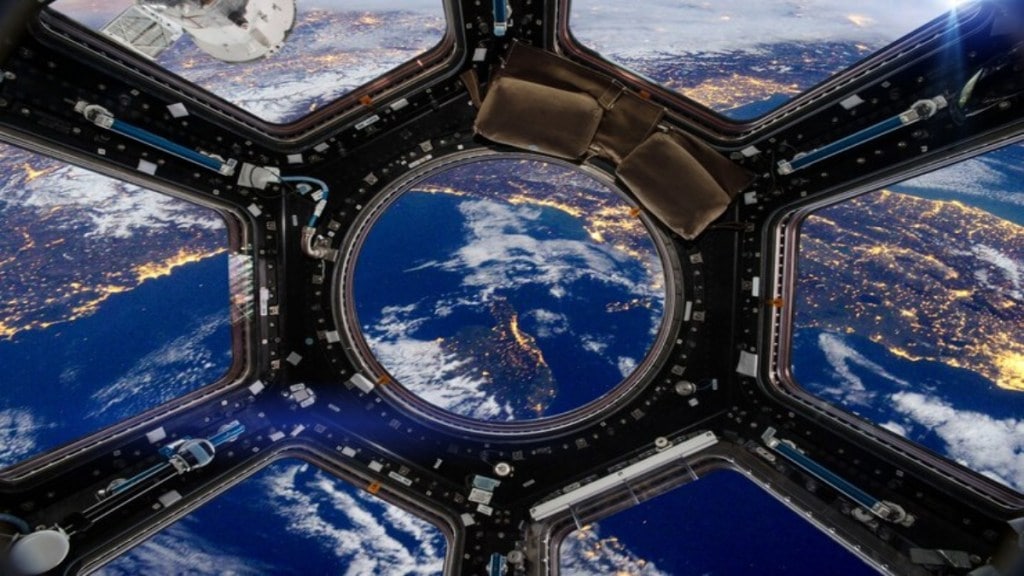The UK Space Agency is investing £7.4 million in seven innovative projects through the Space Science and Exploration Bilateral Programme.
Unveiling Ice Secrets on the Moon’s South Pole
Part of this initiative involves Royal Holloway developing software for the Indian Space Agency’s Chandrayaan-2 orbiter. This software will aid in detecting ice hidden beneath the lunar surface at the south pole.
Exploring Lunar Water Ice with State-of-the-Art Tools
Another project, led by the University of Leicester, will focus on creating a Raman spectroscopy instrument. This instrument will be instrumental in iSpace’s rover and lander missions, investigating water ice on the Moon. Understanding the presence of water ice could revolutionize future lunar exploration endeavours.
Empowering Lunar Exploration
Royal Holloway’s contribution will strengthen ISRO’s Chandrayaan programme, which has been advancing our understanding of lunar resources since 2003. Concurrently, iSpace’s mission, supported by the University of Leicester’s expertise, aims to establish infrastructure for resource utilization on the Moon.
Fostering Global Cooperation in Space Exploration
Other recipients of the £7.4 million funding include the Open University, Sussex, Aberdeen, and Cambridge universities, collaborating with NASA, the Canadian Space Agency, and the Japan Aerospace Exploration Agency. These partnerships underscore the significance of international collaboration in space exploration.
Showcasing Innovations at the Global Space and Technology Convention
This announcement coincides with the Global Space and Technology Convention in Singapore this week, highlighting the burgeoning importance of the space sector in Asia. It also emphasizes the UK’s commitment to working with global partners, as outlined in the National Space Strategy.
Advancing Scientific Excellence
These projects, backed by an initial funding round of £400,000, exemplify the UK’s scientific prowess in critical areas of space science and exploration technology. From detector and hardware development to optics and spectroscopy, these endeavours epitomize the UK’s dedication to pushing the boundaries of space exploration.
The projects:
Chandrayaan-2 and Shukrayaan (Royal Holloway and ISRO, India) – £306,000
Processing of multi-band radar and developing analysis software for missions to detect lunar south pole subsurface ice and map the surface of Venus.
Star-X (University of Leicester and NASA, USA) – £650,000
High-level science data products, accessible via a web portal, and a UK data archive, for the study of Universe formation using the time-domain method and “multi-messenger” astrophysics.
FIR missions (University of Sussex and NASA, USA) – £1.1 million
Provision of superconducting detectors, detector systems, optics, filters and data pipelines for a potential probe mission to investigate formation of planetary systems and the evolution of galaxies.
HABIT (University of Aberdeen and JAXA, Japan) – £320,000
Provision of instrument monitoring air and ground temperature, wind, humidity and hydration state of salts, for a Mars rover/lander studying water cycle, chemistry, and habitability
I-MIM (The Open University and CSA, Canada) – £2 million
High performance detectors for the Mars multispectral and stereo imager for the International Mars Ice Mapper mission to map accessible water ice deposits on the Martian surface.
Lunar Spectroscopy (University of Leicester and iSpace, Japan) – £1.5 million
Lead development of the Raman analytical spectroscopy instrument, based on the Raman laser spectrometer, for commercial small lunar landers and rovers that will explore the lunar surface for space resource utilisation.
CosmoCube (University of Cambridge and NASA, USA) – £1.5 million
Lead for project, payload and science, mission and space platform for a cube-sat that will deploy a precision radiometer to measure spectral distortions in the Universe’s cosmic microwave background.
Comments:
Andrew Griffith MP, Minister for Space at the Department for Science, Innovation and Technology, said:
“From exploring water on Mars and the possibility of sustained human activity on the red planet, to how galaxies evolved over time, our more than £7 million investment is pushing the boundaries of space discovery and putting the UK at the heart of some of the most important global space missions.
“With top UK universities from Sussex to Aberdeen leading these groundbreaking endeavours, our country is at the heart of exploring beyond our planet, working with partners in Japan, India, North America and around the world, and growing our economies.”
Dr Paul Bate, Chief Executive of the UK Space Agency, said:
“These projects present an opportunity for UK science to make crucial contributions to ground-breaking global missions that will deepen our understanding of the Moon and our neighbouring planets.
“This funding, which builds on previous early-stage awards, will help catalyse international investment into the UK space sector and highlights the value we place on sharing knowledge and expertise with our counterparts overseas to break the boundaries of space exploration.
“The Global Space and Technology Convention in Singapore is the ideal setting to share this news and showcase the benefits of expanding our work with global partners.”
Marie-Claire Perkinson, Chair of the Space, Science and Exploration Committee at UKspace said:
“The UK Space Science and Exploration Committee welcomes this opportunity for academic contributions to the bi-lateral programme in support of global agencies. Developing strong relationships through these projects is a key step toward future industrial collaboration.”

